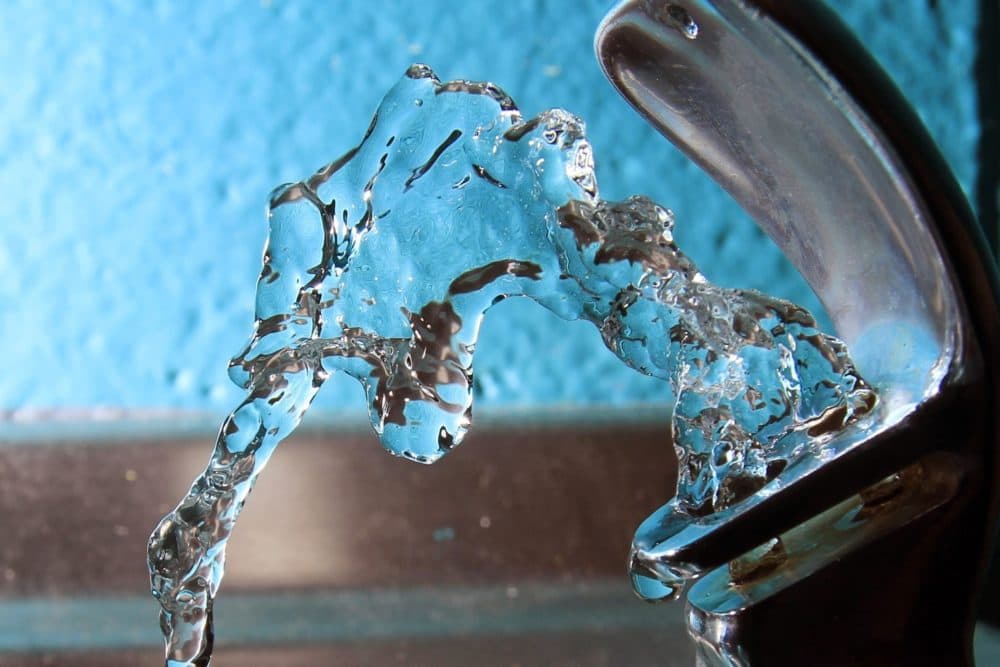Advertisement
New federal PFAS rules to protect health will cost Mass. communities millions

An estimated 181 water systems in Massachusetts will likely be affected by new federal rules limiting toxic PFAS chemicals in drinking water. Of those, an estimated 95 will have to address these so-called “forever chemicals” for the first time, according to data from the Massachusetts Department of Environmental Protection.
Treating drinking water for PFAS often involves installing expensive filters that cost tens of millions of dollars.
MassDEP has not yet released a list of the affected communities. However, a spokesman for the state’s largest provider of drinking water, the Massachusetts Water Resources Authority said that its water will not require additional treatment for PFAS.
The MWRA, which provides drinking water to 3.1 million people in 61 communities including Boston, has tested for all the PFAS compounds included in the new EPA rule, and results ”are either not-detectable or at trace levels so low they can’t be quantified,” according to the MWRA website.
“This is a testament to how well-protected our watersheds are, both the Quabbin and the Wachusett,” said MWRA spokesman Sean Navin.
The state has regulated PFAS in drinking water since 2020, setting a limit at 20 parts per trillion for six PFAS chemicals combined. That is an exceedingly small amount — about the equivalent of a drop of water in a swimming pool.
But the new federal rules limit the two most common PFAS chemicals — PFOA and PFOS — to an even lower level: four parts per trillion, close to the lowest level at which the chemicals can be detected. MassDEP has begun the process of aligning the stricter regulations with the state’s existing rules, said Damon Guterman, a senior analyst in MassDEP’s drinking water program.
Guterman said that the exceedingly low requirements for PFOA and PFOS is what will force many state water systems to add additional remediation.
The Dedham-Westwood Water District, which provides drinking water to about 43,000 people, is one of the public systems that will have to start removing PFAS from its drinking water, according to executive director Blake Lukis. The district’s water has consistently tested at or below the state limit, Lukis said, butPFOA and PFOS levels hover around 5.5 parts per trillion, a hair over the new federal limit.
Knowing that strict regulations were coming, Lukis said the district recently began testing various PFAS-removal options at their two water treatment plants. It's moving forward with upgrades now, which will take several years and ultimately cost about $20 million.
Similarly, the town of Concord’s public water, which serves about 17,000 people, has found three water sources “that are predictably above four parts per trillion,” for PFOS and PFOA, said Alan Cathcart, Concord’s Director of Public Works. Cathcart estimates that treating the town's water for PFAS will cost about $50 million, and the town is set to vote on that amount at the next town meeting.
Concord is working with other MetroWest community water systems to explore the possibility of eventually connecting to the MWRA water supply. “We believe it is potentially a good long-term alternative,” Cathcart said, “But long-term alternative is 10 to 20 years out.”
These costs are in the range of what other towns are paying: Littleton recently spent $16 million for a state-of-the-art treatment plant that will filter PFAS, for example, and Barnstable has invested at least $27 million to address the toxic chemicals.
Many water districts get some financial assistance from the state, like interest-free loans, to pay for the upgrades. And other federal funding exists: The Biden administration has dedicated $10 billion to address PFAS in water nationwide, and another $12 billion in other water improvement projects. But there’s widespread agreement that all that federal funding, divided among the nation’s water systems, will not approach the costs of getting PFAS out of drinking water.
“This federal stimulus, it really doesn't translate to much,” said Cathcart. “The cost is going to be on the customer, and you're going to see significant increases in rates across the commonwealth.”
Also, Massachusetts already has a costly backlog of water infrastructure needs, said Jennifer Pederson, executive director of the Massachusetts Water Works Association, an industry group.
"We need $15 billion over the next 20 years to maintain compliance with existing Safe Drinking Water Act standards," said Pederson, citing a 2021 EPA assessment. "So any money that we're getting isn't sufficient to cover what we need."
Despite the significant costs, Dedham-Westwood’s Lukis said the EPA made the right move.
“Do I think that the water regulation should not be as strict? No, I don't think that — [PFAS] is something that we've learned is harmful to humans,” he said. “My concern is more that it needs to be regulated across the board. I also think they shouldn't manufacture it anymore.”
Massachusetts Sierra Club conservation chair Clint Richmond applauded the new EPA regulations but said much more needs to be done to protect people from exposure to PFAS.
“We know drinking water only counts for about 20% of your potential exposure,” said Richmond, noting that consumer products, food and packaging can also be sources of exposure.
Richmond said that at least two Massachusetts communities, Brookline and Newton, have passed resolutions to avoid purchasing or using products containing PFAS, and that more communities are considering similar moves. At the same time the state legislature is moving forward on a bill that would phase out the sale of many PFAS-containing products by 2027, and all consumer products containing PFAS by 2031.
"It's a significant bill,” said Richmond, who said he expects it to pass sometime this year. “It doesn't go as far as it probably needs to now. So it means that there'll be more work to do in the future.”
Many public health scientists and environmental advocates have called for a comprehensive ban on the use of PFAS, except for very limited circumstances, and closer monitoring of PFAS levels in food. A recent study from Dartmouth found that New Englanders are likely at higher risk for PFAS exposure because of a legacy of PFAS pollution in the region and widespread consumption of fish and shellfish.
PFAS chemicals were invented in the early 20th century and are used in thousands of products, from food packaging to waterproof jackets and firefighting foam. Over time the chemicals wash or flake off these products into landfills, soil and water.
Because PFAS molecules don't break down easily, they are often called "forever chemicals." In Massachusetts, they're widespread in ground and surface waters, rivers and even Cape Cod ponds. Studies estimate that 98% of Americans have detectable levels of PFAS in their blood.
